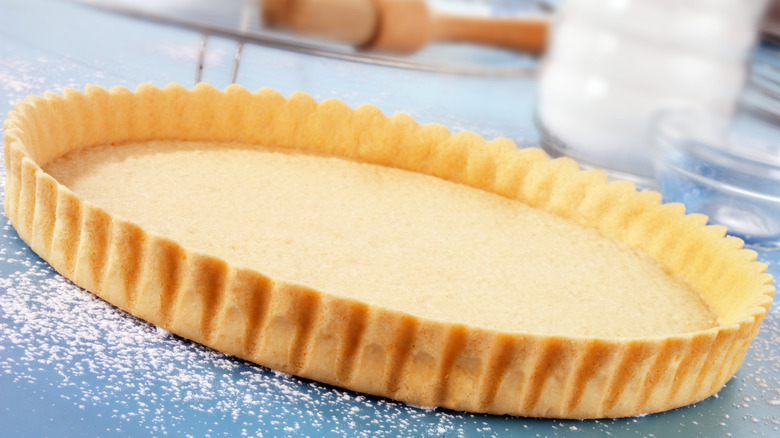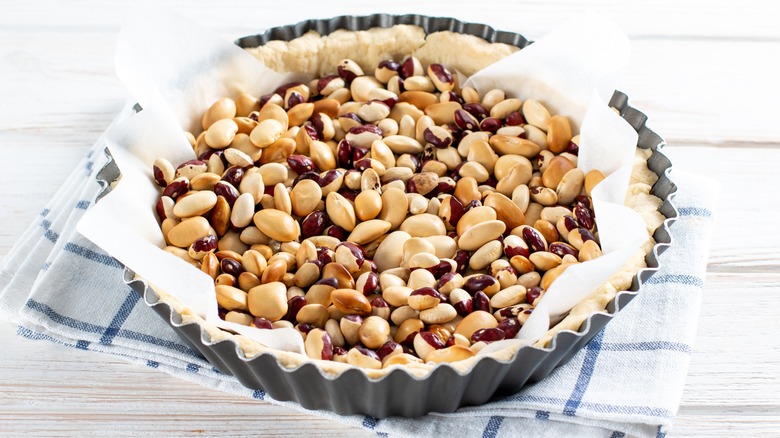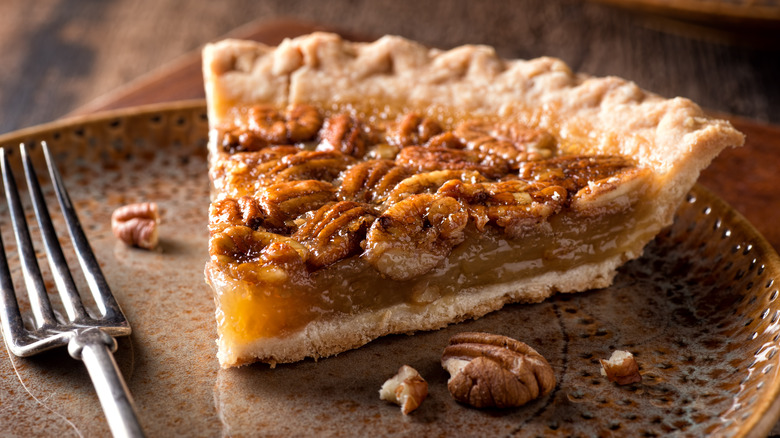Why You Should Try Blind Baking Your Pie Crust
There are so many tips and tricks for making a perfect pie crust. Most bakers know that for unbaked fillings, pie crusts need to be prebaked, but did you know that even for baked recipes, like pumpkin or pecan pie, the crust should be baked before you add the filling and it goes into the oven?
Wet fillings can make pie crusts soggy, even when they are completely baked. You can reduce this risk by brushing the crust with egg white according to The Pioneer Woman, or adding cookie crumbs to absorb moisture, per Food Network. But the best way to ensure a crisp and flaky bottom crust is to bake it first. And for the greatest results, you should blind-bake your pie crust.
Blind baking may seem like a strange term, but it just means you are baking the empty crust, per the Cook's Info. This is a simple task, but there are some things you need to know before you can just toss that unfilled crust into the oven.
How to blind bake a pie
Pie crusts are made of fat, flour, and water. The proteins in flour absorb water and other liquids, per Profound Physics, which is how it makes the dough in the first place. When you add a wet filling to an unbaked pie crust though, you are courting disaster.
Prebaking the pie crust sets the crust so it is less permeable to liquid. Problem solved, right? Well, not quite. Because dough, even pie dough, puffs up when it bakes (per The Practical Kitchen), and it can shrink in the heat of the oven so you need to stabilize it. And that's where blind baking comes in.
To blind bake, first, make sure that you don't overwork the dough, and when you roll out the dough and fit it into the pan, you pull and stretch it as little as possible. Baker Bettie says the gluten in the dough means the crust will shrink when heated if it's overly stretched. The dough can also puff up in the heat as the water turns to steam. To prevent this problem, line the crust with some parchment paper or foil, then add dried uncooked beans or pie weights according to Southern Living, or you can use another pie plate. Be sure the weights cover the entire bottom surface of the crust so it's all held down securely.
Make the perfect pie
Pies should be blind baked at 375 degrees Fahrenheit, per King Arthur Baking Company, for about 20 minutes. Then carefully — carefully! — lift out the parchment paper with the beans or weights in it. Prick the crust all over with a fork and return to the oven for another 15 to 20 minutes or until it's golden brown and set. By the way, while lore has it that you can't use pie-weight beans for cooking, America's Test Kitchen says they cook up just fine.
You will have to let the pie crust cool completely before you fill it with a filling that doesn't require more baking, or the filling will be ruined. But if you are making a pie that goes back in the oven, fill it and start baking.
Now your perfect blind-baked pie shell is ready to be used. Make a delicious pumpkin pie, pecan pie, or decadent chocolate pecan pie, or add a filling that doesn't need additional baking, such as a smooth and rich chocolate pie, or lemon meringue pie.


